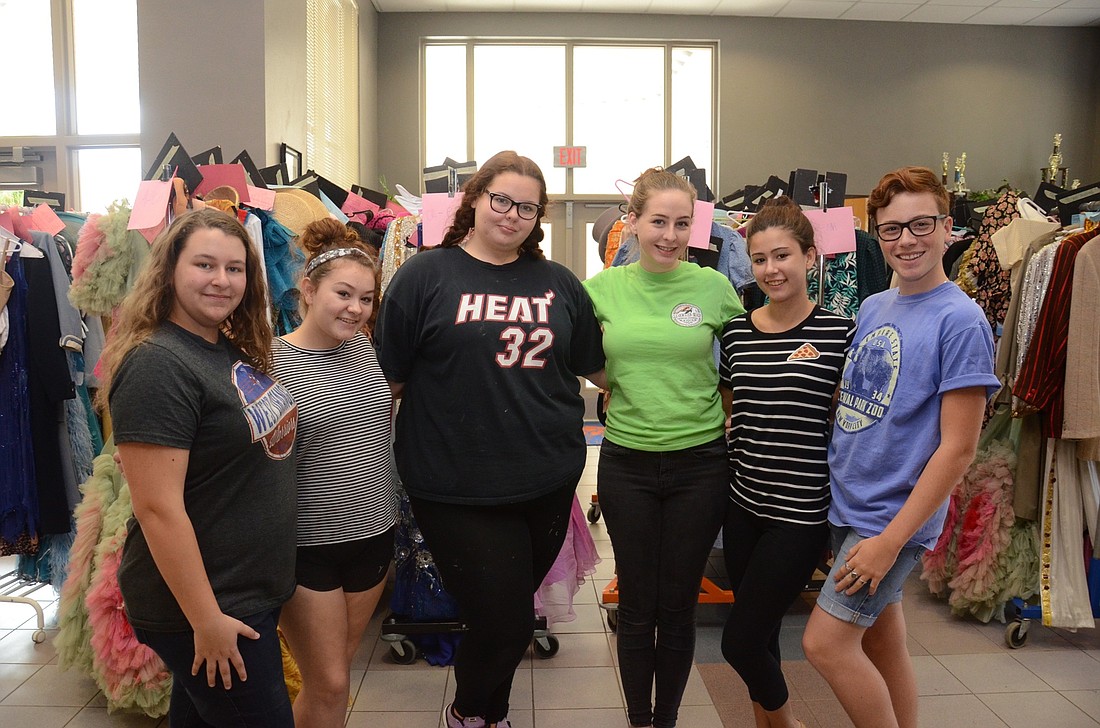- November 22, 2024
-
-
Loading

Loading

It’s been a busy week for the costume crew at West Orange High School.
On the evening of Sept. 16, the costumes for the production of “42nd Street” arrived at the school. Altogether, the rented pieces total more than 1,000 items, including hats and gloves.
The costume crew had just more than a week to do all necessary alterations and get the items ready for the production, which opens Saturday, Sept. 24, at West Orange High School.
These aren’t just any regular costumes.
Many are from the 2001 Broadway revival of the show. Some come from the original Broadway production, while others were used in a recent production at The Muny, a theater in St. Louis.
Any extra pieces, such as aprons, were made by the costume crew.
This isn’t the first time West Orange theater has rented costumes used on Broadway. The program often rents costumes when doing period pieces such as “42nd Street.” The school uses a company called Costume World, based in Deerfield Beach.
Because the musical is based in the Great Depression time period, the sheer number of layers and beads on the outfit made it more practical for the school to rent the costumes rather than create them all. But just because the costume crew didn’t make all the pieces of the costumes doesn’t make their job less challenging.
“The students are responsible for taking care of them,” said Tara Whitman, assistant director and choreographer of the show. “A rip, a stain, would cost us to eat the cost of it. It’s all about organization … anything that isn’t returned, we are responsible for. It speaks a lot to the students, the ladies and gents of the costume crew, because they’re responsible for all of that.”
The number of costumes and accessories involved is a challenge. Kassidy Weideman, Ava Cassatta and Jessie Roddy have about 13 costumes and must do 16 changes throughout the show. Most of these changes need to be done in fewer than 40 seconds.
In a typical show at West Orange, five costumes is usually the largest amount for one actor.
In addition to costumes, the actors will need to change their wigs and shoes. The costume crew’s job doesn’t slow down after the show begins. Each lead actor who needs to do a quick change gets a member of the costume crew to help with the process.
“The perception is, once the show opens, the costume crew is finished,” Whitman said. “But that’s not the case. They’re quick changing and somebody’s got to run that costume back to the dressing room and then meet the actor when they come off for their next scene. Everyone’s going to be exhausted with this show.”
Emily Sannella, the student assistant director of the costume crew, expects that the costume crew will need to stay about one to two hours after the show has ended.
“At the end of the show, before anybody leaves, we have to make sure that everyone has all of their pieces hung up, and then we have to clean up after them,” Charlie Patterson, the student director of the costume crew, said. “We also have to create check-in and check-out forms for when these costumes have to be packed up.”
But for the costume crew, which runs at about eight members, the challenge is accepted.
Contact Jennifer Nesslar at [email protected].
The musical tells the story of director Julian Marsh as he puts on a stage production during the Great Depression.
“The characters are so big, so it’s a lot more cheesy-ish characters, it’s a cheesier show. So it’s difficult finding the depth of these characters and making them come to life,” said Emma Heistand, who plays Peggy.
The show has a strong emphasis on dance and contains many tap numbers, which is a challenge for many of the students who have less experience with tap.
Assistant director and choreographer Tara Whitman held some tap workshops over the summer to help the actors prepare for the show’s choreography.
Matt Guernier, who plays Billy Lawlor, is looking forward to seeing the audience’s reaction to the show.
“It’s such an upbeat and happy show,” Guernier said. “It’s high-energy.”